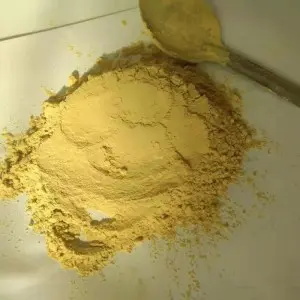Aug . 17, 2024 17:11 Back to list
Exploring the Unique Properties of Hardy Kiwi Pollen and Its Benefits
The Fascinating World of Hardy Kiwi Pollen A Biodiversity Treasure
As we delve into the world of horticulture and agriculture, one fascinating topic that surfaces is the hardy kiwi pollen, derived from the resilient species known as Actinidia arguta. The hardy kiwi, distinct from its fuzzy counterpart, is a small, nutrient-dense fruit celebrated for its unique flavor and adaptability to various climates. This fruit's exceptional properties are closely tied to its pollen, which plays a critical role in its reproduction and, consequently, its cultivation.
The Importance of Pollen in Plant Reproduction
Pollen is a vital component of plant reproduction, enabling fertilization and fruit development. In the case of hardy kiwi, which is dioecious (meaning that individual plants are either male or female), the role of pollen is especially crucial. Male plants produce abundant pollen, which is carried by wind or insects to female plants, leading to the development of fruit. High-quality pollen not only enhances the chances of fertilization but also contributes to the overall vitality and yield of hardy kiwi crops.
Hardy Kiwi An Overview
The hardy kiwi, often referred to as the Arctic kiwi, is native to the temperate regions of Asia. Its resilience to cold climates makes it a popular choice for cultivation in areas that are unsuitable for other kiwi varieties. The fruits are not only smaller and smoother than their fuzzy counterparts but also pack a flavor punch that is both sweet and tart, resembling a blend of strawberries and bananas.
Nutritional Benefits
Beyond being delicious, hardy kiwis are packed with nutrients. They are high in vitamin C, vitamin K, and dietary fiber, making them an excellent addition to a healthy diet. The pollen, too, holds potential nutritional value. It contains proteins, carbohydrates, and various bioactive compounds that can contribute to human health, although research in this area is still evolving.
famous hardy kiwi pollen

The Role of Hardy Kiwi Pollen in Crop Improvement
In agricultural practices, understanding and utilizing hardy kiwi pollen can lead to improved crop yields and better quality fruits. For instance, selective breeding techniques can harness specific characteristics from pollen grains to develop hybrid varieties with enhanced resistance to pests or diseases. Moreover, cross-pollination between different hardy kiwi varieties can yield fruits with superior taste, texture, and nutritional profiles.
Pollination Strategies and Challenges
While hardy kiwis are well adapted to various environments, successful pollination remains a challenge. Farmers and growers often employ several strategies to optimize pollination. They may introduce beehives near orchards, as bees are particularly effective at transferring pollen between male and female plants. Alternatively, some growers manually pollinate flowers, ensuring that every potential fruit receives the necessary genetic material for development.
Environmental Considerations
The cultivation of hardy kiwi also raises important discussions regarding biodiversity and environmental sustainability. As interest in organic farming and sustainable practices grows, the significance of natural pollen and pollinators cannot be overstated. Maintaining ecosystems that support pollinator health is essential, not only for hardy kiwi but for global biodiversity as a whole.
Conclusion
The exploration of hardy kiwi pollen offers a glimpse into the intricate relationship between plant biology, agriculture, and ecology. As researchers continue to investigate its properties and benefits, one thing remains clear the hardy kiwi, with its robust characteristics and delicious fruit, is a testament to the wonders of nature, and its pollen serves as a critical link in the chain of its growth and reproduction. As we cultivate this remarkable fruit, we must also remember to nurture the environments that allow it to thrive, ensuring that future generations can continue to enjoy its unique flavors and health benefits.
-
Pollen Peach Tree for Pure Pollination and High-Quality Peach Pollen
NewsJul.30,2025
-
Premium Cherry Pollen for Pure Pollination & Different Types
NewsJul.30,2025
-
Artificial Pollination Solutions for Various Plant Pollen Types
NewsJul.29,2025
-
Artificial Pollination Solutions for All Plant Pollen Types
NewsJul.29,2025
-
Premium Plant Pollen for Pure Pollination & Pollen Block Solutions
NewsJul.29,2025
-
Artificial Pollination Solutions for Efficient Crop Yields
NewsJul.28,2025